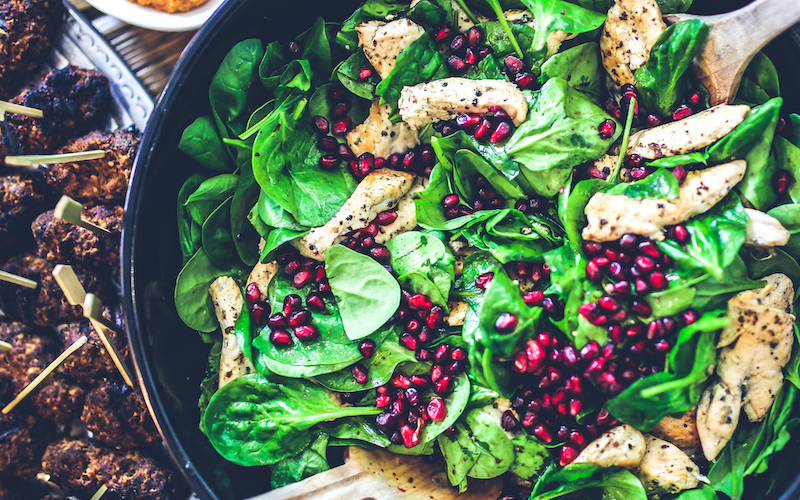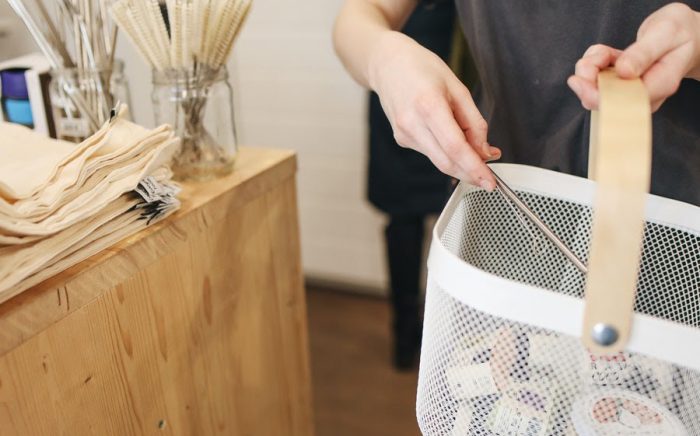Table of Contents
If you’re reeling from this past rollercoaster of a year, you may be looking toward 2021 with a newfound sense of motivation. Taking control of your life and sticking to New Year’s resolutions is a great way to ensure your next trip around the sun is the best one yet. If eating healthy is the goal you have in mind, you may be worried about how much this life change is going to cost.
At RebateKey, we’re all above saving money—and if you want to learn how to eat healthy without draining your finances, we’ve got you covered.
For a step-by-step plan on how to achieve a nutritious New Year, read on for everything you need to know about eating healthy on a budget meal plan!
Step One: Set Your Meal Plan Budget
The average American household spends about $550 dollars on groceries per month. Take into account organic foods, fresh produce, and healthy snacks, and that number is likely to go up. This makes it harder to make the healthy choice sometimes. Learning how to budget properly is crucial when you plan on making the switch to a healthier lifestyle—otherwise you may find yourself spending far too much and ultimately calling it quits.
When you’re eating take out for every meal, it doesn’t take long to exceed this cap—that’s why buying groceries and learning how to cook is a vital aspect of eating well on a budget.
Try following these guidelines to form your perfect grocery budget:
-
Bulk up on pantry items – Nonperishables, like canned vegetables and grains, are a great way to save when grocery shopping. These items are cheap, versatile, and reduce money wasted on spoiled food — plus each pantry staple can come in many healthy options. Your pantry doesn’t need to be all processed food. Some other examples of pantry items are:
- Canned food (tomato sauce, canned fruit, canned beans)
- Brown rice
- Peanut butter
- Dried beans
- Olive oil or avocado oil
-
Fill your freezer – Your freezer is another trick to spending less on food. When you buy produce or meat in bulk, freezing it will lengthen its lifespan and prevent waste. Making fewer trips to the grocery store will make budgeting simpler, since hitting the supermarket multiple times a week is an easy way to lose track of spending. Some healthy diet choices to keep in your freezer are:
- Frozen vegetables
- Frozen meat ( light chicken meat like chicken breast or ground turkey instead of ground beef)
- Frozen fruit
- Frozen leftovers
-
Budget for the entire month – Though you probably won’t be shopping for a full month’s groceries in one sitting, crafting a budget on a monthly basis is easier than making a new budget each week. It will also make it easier to create a grocery list. Keep track of what you spend by saving receipts and calculating your budget in a notebook or mobile app.
Step Two: Pick Cheap, Healthy Recipes for Your Meal Plan
Choosing the right recipes is going to play a key role in the success of your healthy new lifestyle. Finding ways to incorporate important food groups while sticking to a reasonable budget can be tough—but with a little patience and creativity, you’ll be able to crack the health code and craft a healthy meal plan.
For some healthy, affordable weekly meal ideas, consider some of these tips:
-
Try Meatless Mondays – Meat can be one of the priciest items on your supermarket receipt. While getting healthy doesn’t have to mean giving up meat entirely, your wallet may benefit from making a few meatless meals per week. Going heavy on the vegetables and adding in a cheaper protein—like chickpeas or tofu—is going to do both your wallet and your waistline a favor.
-
Give pasta a healthy twist – Ah, yes, the classic budget meal: pasta. You’d be surprised how healthy you can make a bowl of pasta without breaking the bank. Swap regular pasta for a whole wheat brand to add fiber and lower the calorie count, and be sure to include flavorful veggies—like bell peppers, onions, and mushrooms—to give your recipe such much-needed vitamins.
-
Save time with a frittata – Perfect for any time of day, a frittata is a great way to use up all the perishables in your fridge for one satisfying and nutritious meal. Throw your favorite fillings—like cherry tomatoes, spinach, or even some shredded cheese—into an oven-safe dish, whisk up a few eggs, and pour them in. After 25 minutes, you’ll have an entire tray of delicious, healthy food.
Step Three: Shop for Your Affordable, Healthy Ingredients
Now that you’re feeling a little more prepared, it’s time to get down to business: buying the healthy ingredients needed to make these tasty recipes.
The way you purchase your groceries will come down to personal preference and budget. In general, you have two options:
-
Traditional grocery shopping – Many people choose the traditional route of shopping at their local grocery store. The benefit of this technique is having the freedom to choose from a large selection of food. The downside with most grocery stores is their high markups on fresh products, particularly produce and organic ingredients.
-
Grocery delivery service – For those who want to ditch the grocery store altogether, a grocery delivery service may be the way to go. Many delivery companies, like Thrive Market, offer low monthly prices on healthy, organic food. Choosing a healthy delivery subscription is also a great way to resist junk food temptations that you may see in a normal supermarket.
Step Four: Save Your Leftovers and A Stick to Your Meal Plan
The final step of meal planning is perhaps the most important of all: saving your leftovers.
Leftovers are the key to staying within your monthly food budget, particularly if you’re only cooking for one or two people. When you choose recipes that keep well in the fridge, you’ll find that making the most of your leftovers can help save time and money.
If you’re new to the leftover scene, these handy tips should make things a little easier:
-
Invest in Tupperware– Having enough Tupperware for your meal preps is an important part of keeping leftovers fresh. The higher quality your Tupperware, the better your reheated meals will taste. Look for some affordable and quality Tupperware options on Amazon.
-
Make foods that keep – Leftover pasta is probably going to last longer than leftover scallops, so be aware of what foods are going to hold their shape and flavor when left in the fridge for a day or two.
-
Mix up your meal preps – Eating the same thing for four days straight can get a little boring, so don’t be afraid to make a couple of meal preps at a time! This will help you save money without sacrificing variety. If you want some healthy meal options outside of your prepped meals for the week, check out Everyplate. They make meal planning easy!
Lose Weight, Not Money With RebateKey
Balancing your health and finances doesn’t have to be stressful. With RebateKey, you can get exclusive coupons and cashback rebates on all your healthy eating necessities.
The way it works is easy—simply find the latest deal on your favorite grocery subscription service, Tupperware brand, or healthy cookbook on our website. From there, claim your rebate and make your purchase. Once you’ve finished shopping, we’ll take care of the rest. All you have to do is wait for your check and your products in the mail.
Eating well doesn’t have to break the bank. Stop clipping coupons and start chopping veggies with RebateKey, today!
Sources:
https://www.valuepenguin.com/how-much-we-spend-food
https://www.thekitchn.com/top-10-tips-for-grocery-budgeting-grocery-intelligence-211173



